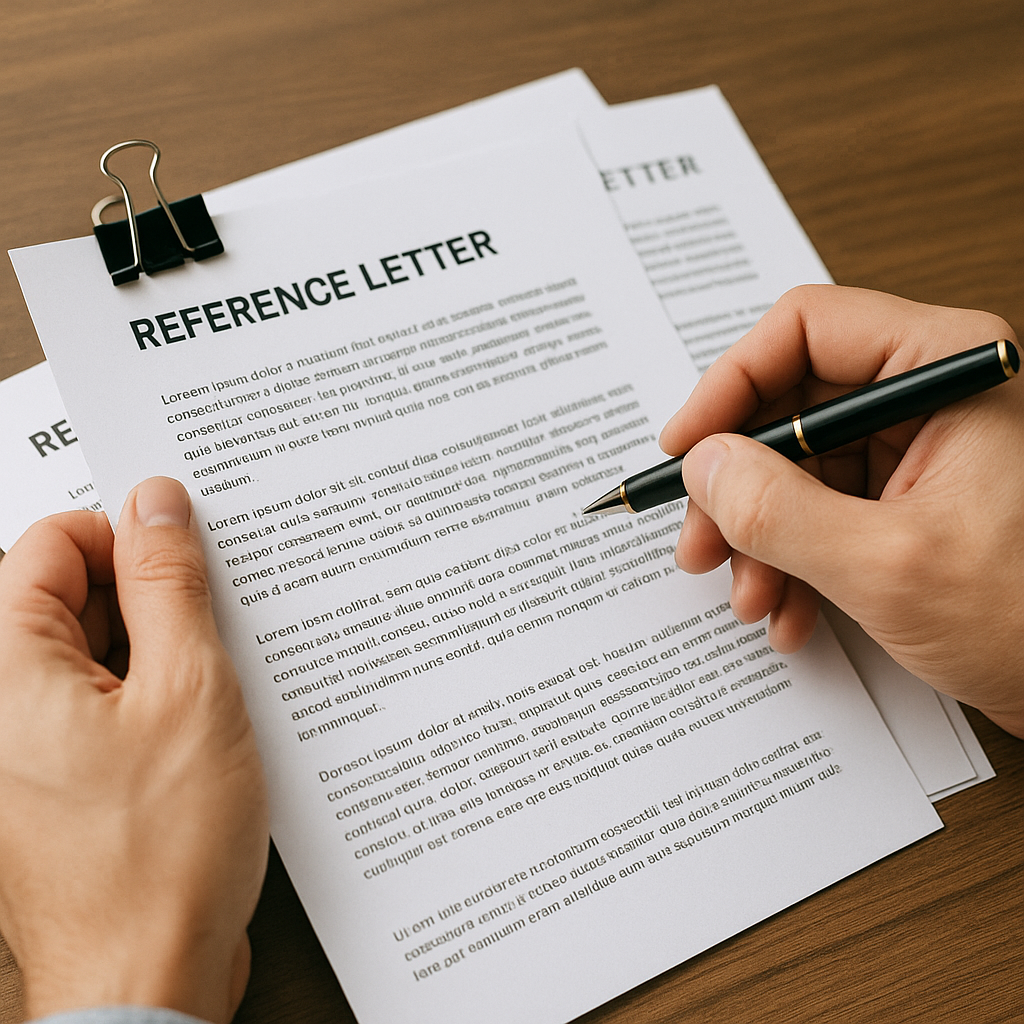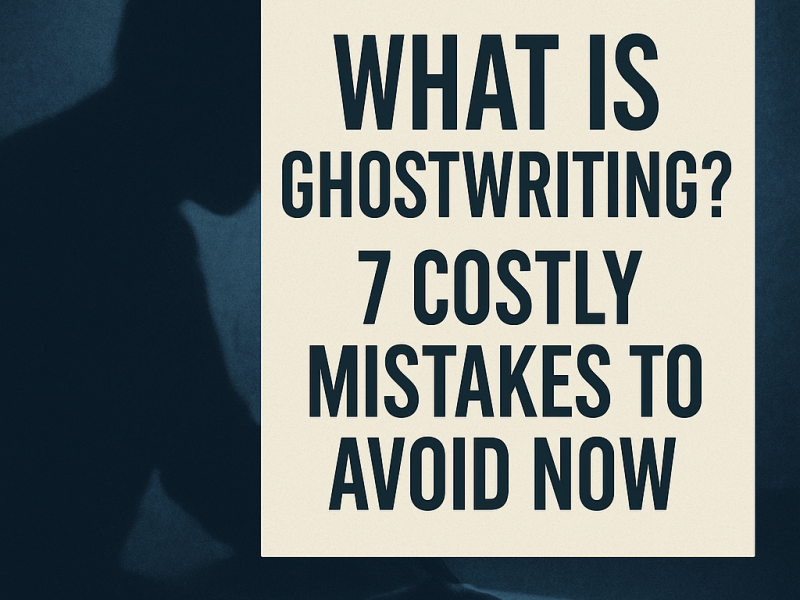Ghostwriter references are the most critical — and most overlooked — part of the hiring process. Failing to verify a ghostwriter’s credibility can lead to missed deadlines, mismatched tone, and costly rewrites. If you’re investing in a book, blog, or business content, checking references isn’t optional — it’s your first layer of protection. This guide shows you exactly how to do it right, without wasting time or money.
At Ink In The Shadows, we show both writers and clients how to build professional partnerships — and protect themselves — using battle-tested reference techniques that save time, money, and credibility.
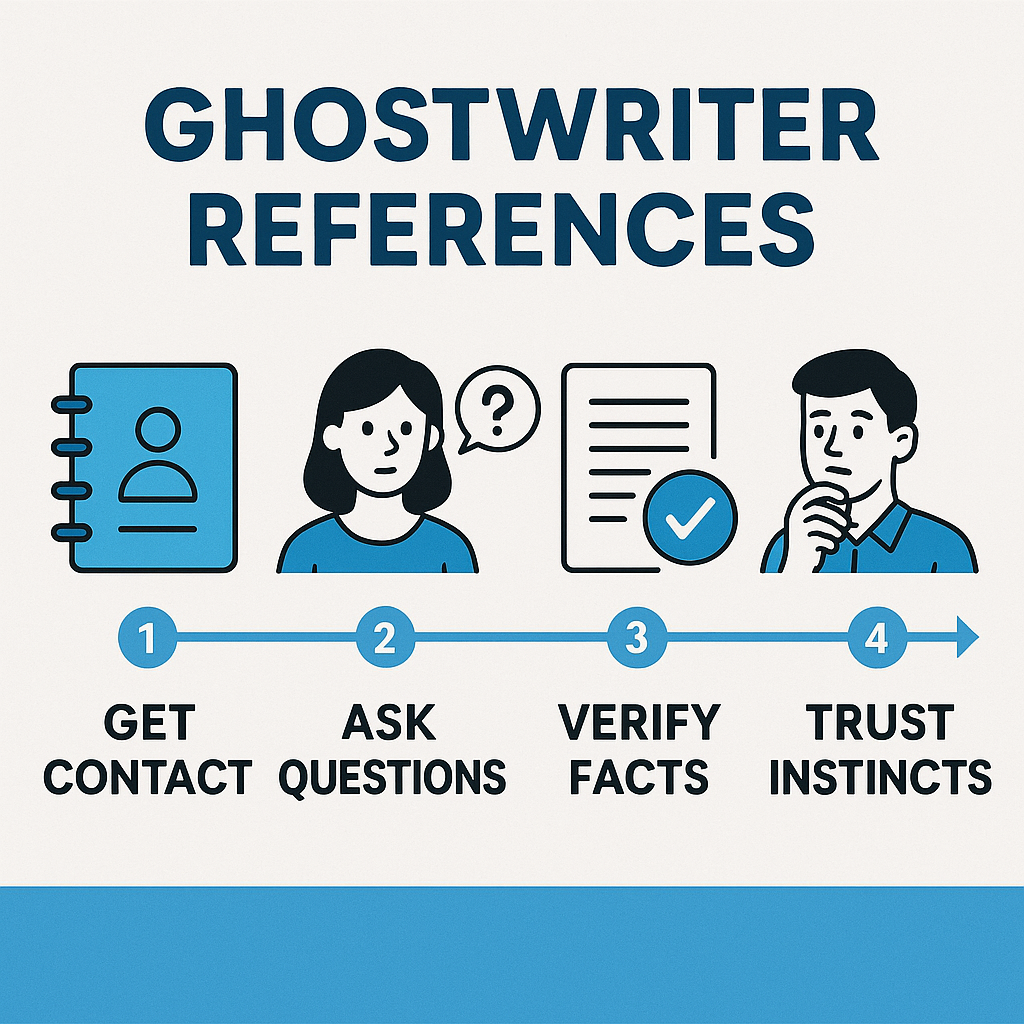
Why Ghostwriter References Are Your First Line of Defense
A beautiful portfolio might sell you on a ghostwriter’s style, but only absolute references confirm their substance.
- 🕵️♀️ Did they meet deadlines?
- 🧠 Did they understand and match the client’s voice?
- 🤝 Did the project run smoothly or end in friction?
Smart clients don’t leave that to chance. They dig — and when they do, they uncover the truth that portfolios hide. That’s why Ink In The Shadows includes complete training on vetting professionals using reference scripts, sample questions, and what to do when the story doesn’t add up.
🔗 Harvard Business Review: What great hiring actually looks like
The 5 Most Common Ghostwriting References Mistakes
❌ 1. Trusting a Portfolio Over Performance
Lovely samples don’t mean the ghost showed up on time, managed revisions, or followed NDAs. Ask former clients what it was like working with them — the good, the bad, and everything in between.
❌ 2. Not Matching Project Scope
Writing a 700-word blog ≠ ghosting a 50,000-word memoir. References should align with the type, tone, and scale of your project.
❌ 3. Accepting Vague Praise
A reference that says, “They were good to work with,” tells you nothing. You want specifics: word counts, tone match, revision cycles, communication cadence.
❌ 4. Skipping the Live Conversation
Emails and text testimonials lack nuance. A 10-minute voice or video call reveals clarity — or concern.
❌ 5. Ignoring Hesitation or Inconsistency
If a reference hesitates, changes their story, or avoids giving a clear “yes” when asked if they’d hire the writer again… believe them.
🔗 BBB: Spot red flags when hiring professionals
💬 Client Callout:
“I almost signed with a ghostwriter based on their website. But after one call with a past client, I ran the other direction. That 15 minutes saved me $10,000 and six months of stress.”
— Kara R., Business Book Author
What to Ask When Verifying Ghostwriter References
Want to filter fluff from facts? Ask these:
- What kind of project did they complete?
- Was it delivered on time and to spec?
- How well did they capture your voice or style?
- Were there revision issues or scope creep?
- Would you rehire them? Why or why not?
Don’t wing it. The Ink In The Shadows ghostwriting course includes done-for-you reference call scripts that protect you from miscommunication — and manipulation.
🔗 SBA: Small business hiring questions
How to Spot a Strong Reference vs. a Shaky One
Real references are clear, consistent, and connected to the actual scope of work.
| 🔍 Trait | 🚫 Weak Reference | ✅ Strong Reference |
|---|---|---|
| Specificity | “They were great” | “Delivered a 60K memoir in 8 weeks” |
| Tone Match | “Sort of got my voice” | “Nailed my speaking cadence” |
| Deadlines | “We had a few hiccups” | “Delivered early with zero issues” |
| Willingness to Rehire | “Maybe… not sure” | “Already hired them again” |
How to Vet a Ghostwriter Before You Hire Them
Ghostwriter References: NEW: Ink In The Shadows vs. DIY Hiring (Comparison Table)
| Feature | DIY Ghostwriter Hiring | Ink In The Shadows Approach |
|---|---|---|
| Reference scripts | ❌ Guess-and-check | ✅ Pre-built client interview scripts |
| Vetting tools | ❌ None | ✅ Templates, questions, red-flag guides |
| AI detection training | ❌ Not included | ✅ Included in the course |
| NDA-safe communication | ❌ Learn as you go | ✅ Fully scripted templates |
| Client voice capture strategy | ❌ Trial and error | ✅ Process maps + client interviews |
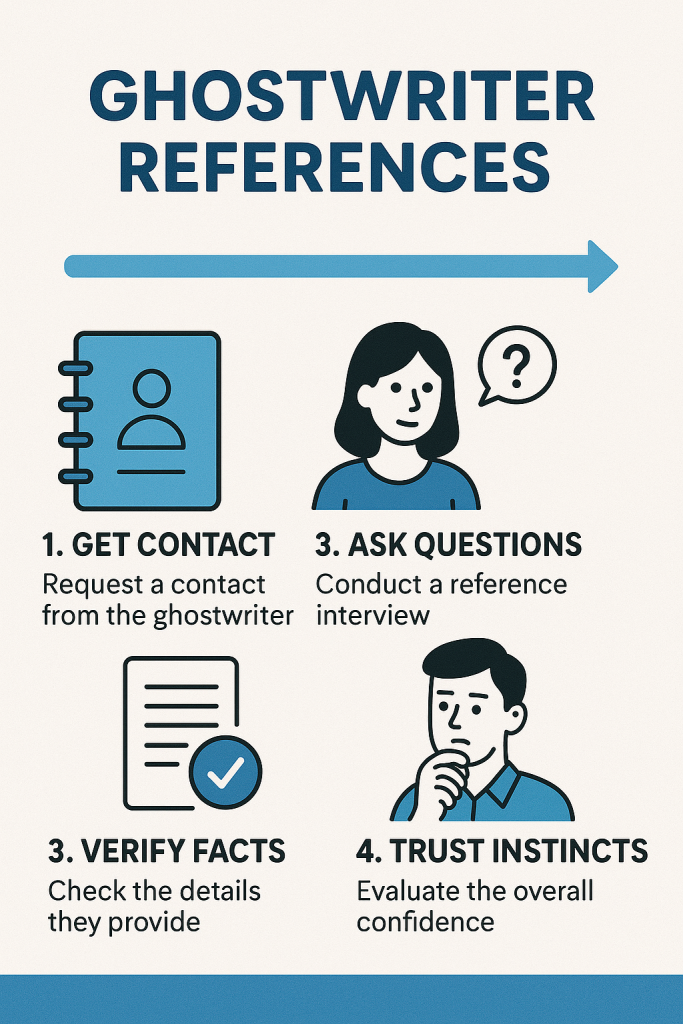
Ghostwriter References: Why Ink In The Shadows Is the Reference Game-Changer
Hiring a ghost shouldn’t feel like a gamble. That’s why Ink In The Shadows built its entire course around the real-world process of becoming — or hiring — a ghostwriter who delivers:
- 🔐 NDA-safe frameworks
- 🧠 AI-proof content review processes
- 🗣️ Voice-matching exercises
- 💬 Scripts for reference calls and red-flag rejection
- 🤖 Client-vetting systems that work in the AI age
If you’re tired of trial-and-error hiring or want to protect your name as a ghostwriter, this course is your reference-ready safety net.
🔗 Join the course now at InkInTheShadows.com
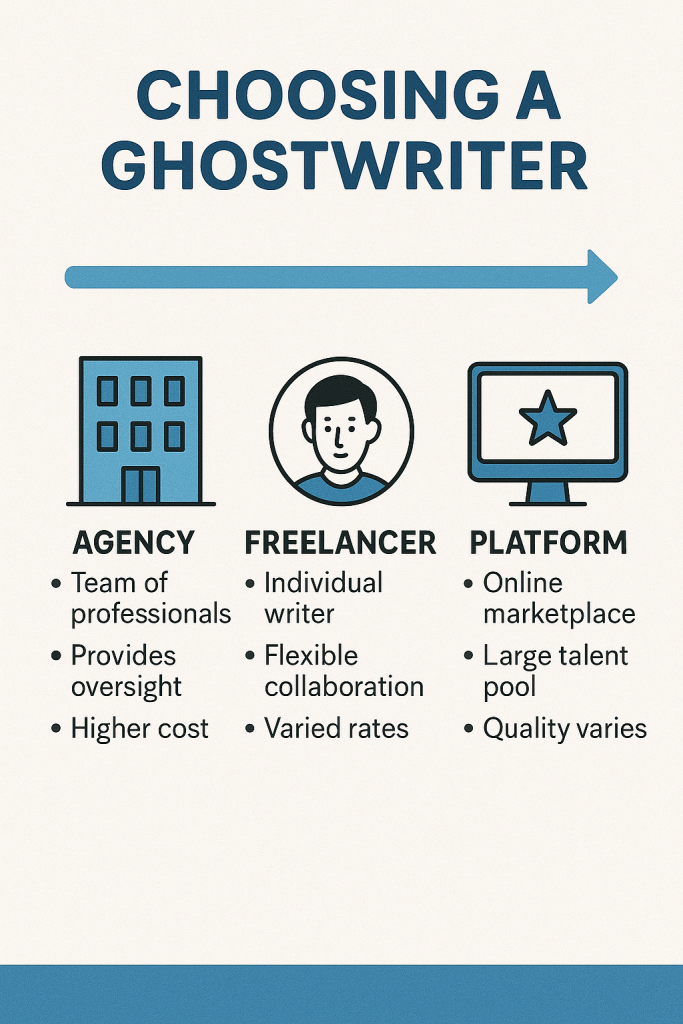
Final Thoughts: Ghostwriting is Quiet — but Accountability Shouldn’t Be
When the work is invisible, the process must be rock solid.
If you: Don’t assume. Don’t guess. Don’t regret it.
Checking ghostwriter references is the difference between stress and success.
If you’re ready to hire (or be hired) with total confidence, start here.
FAQ about Ghostwriter References
What should I do if a ghostwriter refuses to provide references?
That’s a red flag. Most serious ghostwriters can offer at least two prior clients willing to speak — even under NDA-safe terms.
Can testimonials on a website be trusted?
Treat them as a warm lead — but always confirm them with honest conversations.
How many references should I request?
Two is the minimum. Three is ideal — especially if you’re hiring for a multi-month or high-ticket project.
What’s the biggest reference red flag?
Hesitation. A good ghostwriter’s client will speak highly and clearly. If they hedge, dig deeper.

